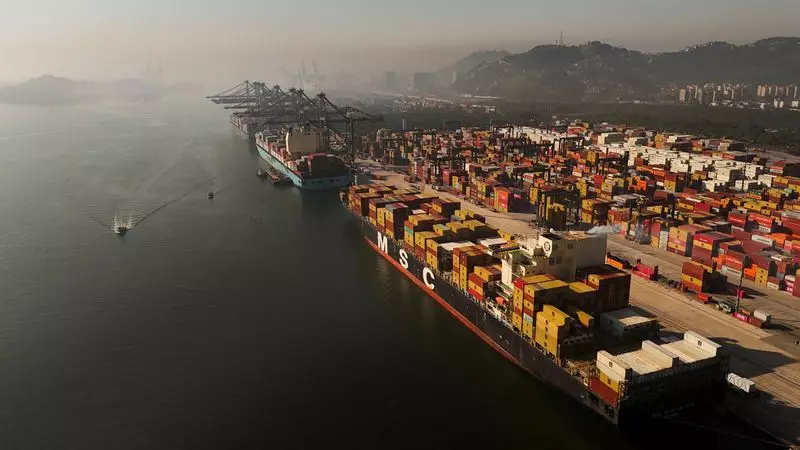As geopolitical tensions continue to simmer, analysts predict that the brewing trade conflict could escalate, fundamentally reshaping international commerce. Insights from UBS delineate a structured approach to this anticipated discord, categorizing its progression into several pivotal phases: the “tweet phase,” the “imposition phase,” and the “impact phase.” By dissecting these stages, we can better comprehend the nuances of a potential trade war predicted to unfold throughout 2025.
The initial “tweet phase” appears to have commenced, marked by a surge of public rhetoric and social media proclamations. These statements often serve dual purposes: they set the tone for negotiations while simultaneously applying pressure on opposing trade partners. This digital battleground for influence allows nations to take the moral high ground and rally domestic support without necessitating any immediate policy shifts. However, the proactive stance seen during this phase poses its own risks; public sentiment can swiftly turn against a government if proposed actions are perceived as overly aggressive or detrimental to local economies.
Analysts forecast the beginning of the “imposition phase” in early 2025. This stage entails laying the groundwork for new tariffs, which includes drafting necessary legal frameworks, inviting public commentary, and ensuring compliance with international trade laws. As countries navigate this complex terrain, the effectiveness of their strategies will heavily rely on administrative priorities and the meticulousness with which they execute policy changes. It’s important to note that while preliminary actions might already be occurring behind the scenes, the public unveiling of these measures often requires a strategic timeline to maximize political advantage.
During this phase, stakeholders across various sectors will begin to assess potential repercussions, ultimately shaping their operational strategies. Businesses, anticipating turbulence, are expected to undertake inventory management and stockpiling initiatives. Yet, the negative implications, such as decreased trade volumes and stunted economic growth, might surface before actual tariff costs materialize in corporate earnings reports. Thus, the rush to mitigate risks could inadvertently accelerate economic disruption.
Once tariffs are officially imposed, we enter the “impact phase,” anticipated to commence in the latter half of 2025. The ramifications of enacted tariffs can ripple across the global economy, spurring companies to reevaluate supply chains and market strategies. As firms grapple with increased costs, the looming threat of reduced consumer demand may exacerbate economic decline. Predictions suggest that emerging economies, particularly those closely tied to major trading partners like the U.S. and China, will experience heightened currency volatility, further complicating their recovery efforts.
The interplay between domestic policy and global market reactions cannot be overlooked. Analysts note that the Federal Reserve’s monetary policy, including any potential rate cuts, could interact with these trade dynamics, leading to unexpected outcomes in financial markets. For instance, while certain industries may benefit from protective tariffs, others might face crippling costs, creating a patchwork of economic conditions across sectors. The risk of stagflation—characterized by high inflation rates amidst stagnant growth—may loom large if inflationary pressures outpace wage growth and employment gains.
Navigating Negotiations in a Turbulent Environment
Even amidst ongoing tensions, negotiations are expected to persist, perhaps offering glimmers of hope for conflict resolution. Historical patterns suggest that trade disputes often give way to dialogues aimed at finding common ground. China’s strategic response, such as recent moves to restrict the export of critical raw materials, underscores the transactional nature of global trade and the immediate impact of policymaking.
The current geopolitical landscape, characterized by high-stakes negotiations and retaliatory measures, highlights the unpredictability inherent in global commerce today. Policymakers must navigate these turbulent waters with foresight, balancing the complexities of diplomacy with economic realities.
As UBS analysts adequately point out, while there is considerable uncertainty surrounding the development of a potential trade war, the trajectory will be shaped by responses from global trade partners and market participants. An escalation of rhetoric combined with unforeseen retaliatory measures could significantly alter economic forecasts.
Businesses, policymakers, and investors alike must remain vigilant, prepared to adapt to the evolving landscape that this multi-phased trade conflict presents. Adapting to these changes with agility and insight will be essential to mitigating risks and seizing potential opportunities in the increasingly complex web of international trade.

